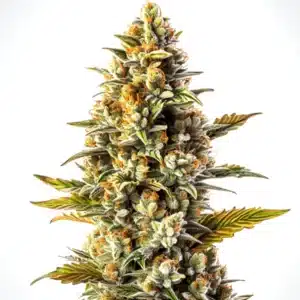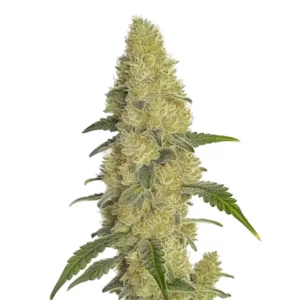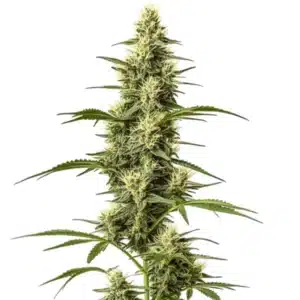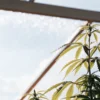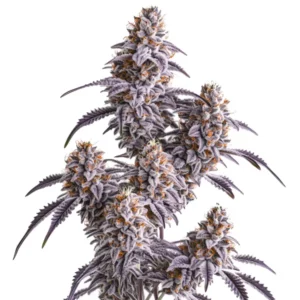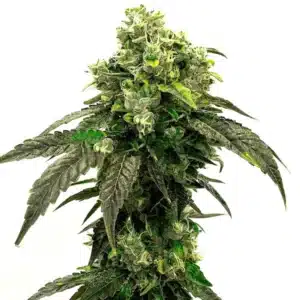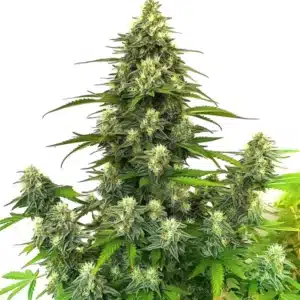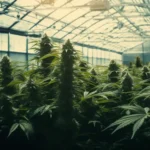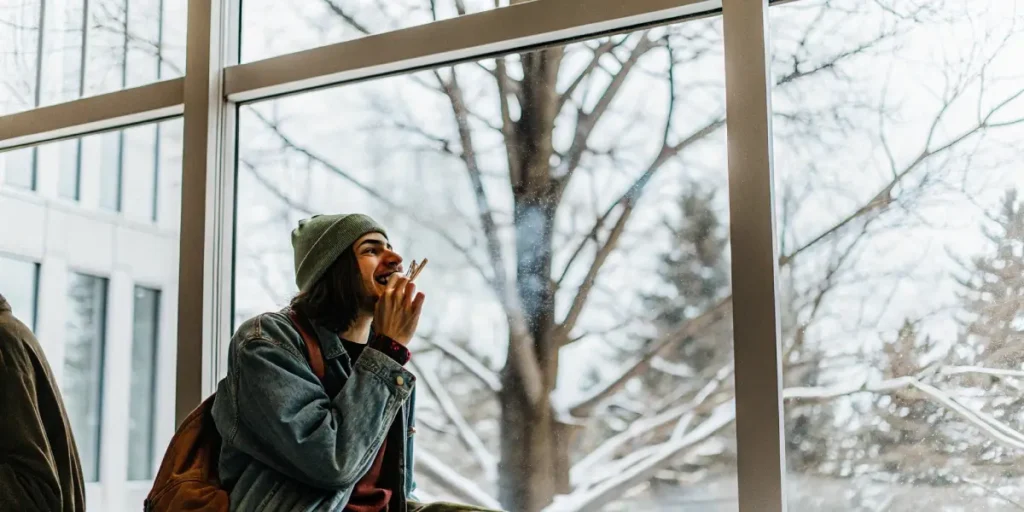
Can You Smoke Shrooms? The Controversial Truth Exposed!
Paranoid. Nervous. Joyful. Fearful. Enthusiastic. These are the array of emotions individuals undergo during a psilocybin trip. The euphoria induced by psilocybin is commonly referred to as “tripping” due to its hallucinogenic properties. For many users who choose to Smoke Shrooms, these emotional shifts can feel even more intense and unpredictable, adding to the psychedelic experience.
Some individuals may have a positive experience known as a “good trip,” where they perceive a mystical or spiritual out-of-body sensation. Conversely, a negative experience, or a “bad trip,” is markedly different.
Recommended Strains
Gorilla Blue Auto
-
THC: 18% - 20%
-
Type of seed: Autoflowering
-
Phenotype: 50% Sativa / 50% Indica
-
Flavor: Blueberry, Fruity, Pineapple
-
Life cycle of: 8 - 10 weeks
Gorilla Glue #4 Fast Version
-
THC: 19% - 22%
-
Type of seed: Feminized
-
Phenotype: 60% Sativa / 40% Indica
-
Flavor: Chocolate
-
Day to flower: 6 - 8 weeks
During a bad trip, time may seem to stand still, individuals may perceive sensations of touch and sound that aren’t real, and they may experience extreme paranoia, among other symptoms.
There are risks and repercussions associated with the decision to consume magic mushrooms. Awareness of these risks can mitigate the risk of overdose and the development of a substance use disorder (SUD).
In recent years, there has been a resurgence of interest in using psilocybin and micro-dosing, which has become the subject of medical studies. The question “Can you smoke shrooms?” is a topic of discussion in scientific and social circles.
While the simple answer is yes, there is more nuance to consider. If you’re wondering are shrooms smokable, you’re not alone. You’re here because you have questions, and our team of expert addiction treatment specialists is here to provide answers.
What is Psilocybin?
Previously, we told you about psilocybin. Now, we will see that psilocybin is a psychoactive substance found in certain mushrooms, such as those of the Psilocybe genus, commonly known as magic or hallucinogenic mushrooms. This compound is produced naturally in these mushrooms as part of their life cycle and is responsible for the psychedelic effects when consumed. Some users refer to these experiences as Smoke Shrooms trips, although the term is often used broadly to describe various methods of consuming psilocybin-containing fungi. Furthermore, as we will see, the psilocybin also found in these mushrooms is converted to psilocin when metabolized in the human body, producing the characteristic effects of this substance. So, yes, it’s psilocin that gets you high, not psilocybin. But how is psilocin formed?
Insights into Fungi Metabolism: Psilocin is synthesized within fungi cells as part of their metabolism. Psilocybin serves as the precursor to psilocin, acting as a prodrug. This implies that the psilocybin present in your mushrooms converts to psilocin in the body upon ingestion, as psilocin is the active form responsible for psychedelic effects.
Biochemical Reactions: Psilocybin is generated through biochemical reactions involving several enzymes within the fungi. These enzymes transform simple chemical compounds into psilocybin and eventually into psilocin. Significance in
Lifecycle: While the precise function of psilocin in fungi remains incompletely understood, it is believed to play a role in spore dispersal. When fungi release their spores, the consumption of psilocin by animals (including humans) may influence their behavior and potentially contribute to spore dispersal through animal feces.
In recent years, scientific study and research into these substances have gradually shed light on their effects and therapeutic potential, leading to a resurgence of interest in their use in medical and therapeutic contexts.
Promos & Deals
The Effects of Smoke Shrooms: What You Need to Know
When employed in more conventional manners, like consumed as tea or as part of a meal, mushrooms can lead to various side effects, including elevated blood pressure, accelerated heart rate, shivers, upset stomach, nausea, dizziness, numbing of the tongue and mouth, anxiety, and unsettling hallucinations and delusions. So, if you’re wondering how long do shrooms take to kick in, it typically depends on how they are ingested. Nevertheless, smoking mushrooms can bring about respiratory and other pulmonary issues. It’s not uncommon for individuals to mix substances like cannabis and mushrooms for smoking, heightening the chances of a negative experience and additional adverse effects.
While the trend to Smoke Shrooms is not regarded as hazardous as smoking heroin or methamphetamine, using mushrooms in general carries its own set of risks. Besides inducing frightening hallucinations, anxiety, and paranoia, these effects can also impair judgment and increase the likelihood of engaging in risky behaviors. It’s typical for individuals to combine mushroom use with other substances, such as alcohol consumption, which can result in unpredictable side effects.
Why is psilocybin psychoactive?
When we consume psilocybin, such as that found in psilocybin mushrooms, our body metabolizes it into psilocin. Psilocybin is a prodrug of psilocin, meaning it is not active in its original form but converts into psilocin in the body, leading to the psychedelic effects we experience. Here’s the simplified process:
Upon ingesting psilocybin mushrooms or products containing psilocybin, such as capsules or extracts, psilocybin reaches the stomach. Once in the body, psilocybin is metabolized by the enzyme phosphorylase in the liver, where a phosphate group is removed. This process converts psilocybin into psilocin, the active and psychoactive form of the substance.
Once converted into psilocin, this molecule can cross the blood-brain barrier and affect the central nervous system. Psilocin interacts with serotonin receptors in the brain, resulting in characteristic psychedelic effects such as changes in perception, thinking, emotions, and consciousness. As we already know, the effects of psilocin can vary depending on dosage, environment, and individual mood. Typical psychedelic experiences may include visual hallucinations, changes in time and space perception, and deep introspection. These are common outcomes for those who Smoke Shrooms, highlighting the powerful impact of psilocin on human consciousness.

Natural effect psilocybin
The effects of psilocybin, like many other psychoactive substances, can vary from person to person and depend on factors such as dosage, environment, and individual mood. Below, we describe some of the common effects associated with this compound:
Visual hallucinations: One of the most characteristic effects of psilocybin is visual hallucinations. Colors may appear more vibrant, patterns may be more intense, and objects or images that do not exist may even appear.
Perceptual changes: Time and space perception can be altered. Individuals may feel that time slows down or speeds up, and the notion of space can be distorted. For those wondering, ‘can I smoke shrooms,’ it’s essential to understand the potential impacts on perception.
Changes in thinking: Thoughts can become more abstract and fluid. Connections between ideas may seem more straightforward, and the mind may explore concepts and themes more deeply.
Euphoria and well-being: Many people experience a state of euphoria and well-being during a psilocybin trip. Feelings of joy and connection with the environment or others may be common.
Emotional connection: Psilocybin can increase empathy and emotional connection with others. Individuals may better understand the emotions and experiences of those around them.
Spiritual experiences: Some people describe having deeply spiritual or transcendental moments when using psilocybin. These can involve feelings of connection with the universe or gaining deeper awareness about the essence of life.
Anxiety or confusion: In some cases, especially in challenging environments or with high doses, psilocybin can cause stress, confusion, or fear. A safe and supportive environment is essential to minimize these adverse effects.
It’s important to note that the effects of psilocybin can be highly subjective and largely depend on dosage and the environment and context in which it is consumed. Additionally, not all experiences with psilocybin are necessarily positive, and what we know as “bad trips” can occur. As we always say, the use of psychedelic substances should be approached with caution and responsibility! As you’ll see below, psilocybin has demonstrated therapeutic potential in treating conditions such as depression or post-traumatic stress disorder, and research into its safety and efficacy continues.
Smoking Shrooms vs Eat Mushrooms
Consuming magic mushrooms is commonly done by ingesting them either raw or after drying and grinding them into a powder, which is then added to a smoothie or tea. However, most individuals prefer to consume them as is simply. Micro-dosing has gained popularity among mushroom users.
Smoking mushrooms is not a widely practiced method and typically results in a milder effect or “high,” if any. For those asking, ‘can I smoke shrooms,’ it’s important to note that inhaling mold spores while smoking mushrooms can elevate the risk of lung infections. Certain species of mold found in mushrooms can adversely affect health, remarkably increasing the risk of lung inflammation and infections for individuals with allergies, preexisting lung conditions, or weakened immune systems.
Healthy Alternatives to Smoking Magic Mushroom
Given the potential risks and reduced effectiveness associated with smoking magic mushrooms, it’s worth considering safer and more reliable alternatives.
Oral Consumption: Eating magic mushrooms is the most common method. This can be done with fresh or dried mushrooms. While the taste may deter some, it’s a simple method that allows for easy dosage control.
Mushroom Tea: Another popular method is to brew magic mushrooms into a tea. This can help reduce digestive discomfort and speed up the onset of effects.
Capsules: For those who dislike the taste, magic mushrooms can be ground into a powder and put into capsules. This method offers precise dosing and is convenient for microdosing.
Edibles: Like cannabis, magic mushrooms can be used in various edible products, such as chocolates or gummies. This can enhance the consumption experience.
Regardless of the method used, it’s crucial to consume magic mushrooms responsibly and in a safe environment. Always start with a low dose to assess your reaction.
Legal Federal Situation of Smoke Shrooms in the U.S.
In the United States, magic mushrooms are subject to stringent federal regulations. Governed by the Controlled Substances Act, these fungi—often referred to in underground culture as Smoke Shrooms—are categorized as Schedule I drugs, reserved for substances with a high potential for abuse and no recognized medical use.
Therefore, possession, sale, or use of psilocybin mushrooms can result in significant legal consequences across the country. Federal law treats all forms of magic mushrooms equally, alongside other illicit substances like LSD and heroin.
Despite emerging research suggesting potential therapeutic benefits, such as treating refractory depression and anxiety in terminal illnesses, psilocybin’s clinical use remains unauthorized by the FDA. The U.S. Food and Drug Administration has not altered its position on these psychedelic agents, except within approved clinical trials or under designated breakthrough therapy exemptions.
What is the legal situation regarding shrooms in the USA?
Some states permit possession of mushroom spores since their psychedelic properties only emerge when fully developed. Conversely, certain states prohibit both spores and fully grown mushrooms.
Georgia, for example, prohibits both. Individuals are not authorized to possess, sell, or purchase mushrooms or spores, as they are categorized as Schedule I substances by the U.S. Drug Enforcement Administration (DEA), indicating they have no recognized medical uses and are highly addictive.
On the other hand, Oregon has passed the Oregon Psilocybin Services Act, legalizing the medical use of psilocybin, making it the first state to do so.
Cities like Denver, Oakland, and Santa Cruz have opted to decriminalize the possession and consumption of mushrooms, treating offenses related to them as low-level and of minimal concern. Instead, attention is shifting towards exploring the therapeutic potential of mushrooms.
Even in jurisdictions where possession of mushrooms is permitted, stringent regulations indicate an ongoing evolution in the legal landscape surrounding mushrooms in the United States.
What are the strongest psychedelic mushrooms?
There is a wide range of psychedelic mushrooms, each of which has different levels of potency. More potent mushrooms tend to induce a more intense experience; each strain can produce different results or trip experiences.
The medicinal potential of magic mushrooms to address various health conditions has gained significant attention. However, knowing the potency of these substances is vital before consuming them. It is advisable to start with a low dose and proceed gradually, allowing enough time (about an hour or more) to evaluate its effects before considering additional intake. (For more guidance on dosage, see our psychedelic mushroom dosing guide.)
Now, it is good to point out that if you want to smoke any of these psychedelic mushrooms, and you’re thinking, ‘can I smoke shrooms,’ it is best to first consult with someone with experience or a mushroom specialist because it can take you on a bad trip. For this reason, we suggest that you take it easy when consuming mushrooms when you want to smoke them to avoid future problems.
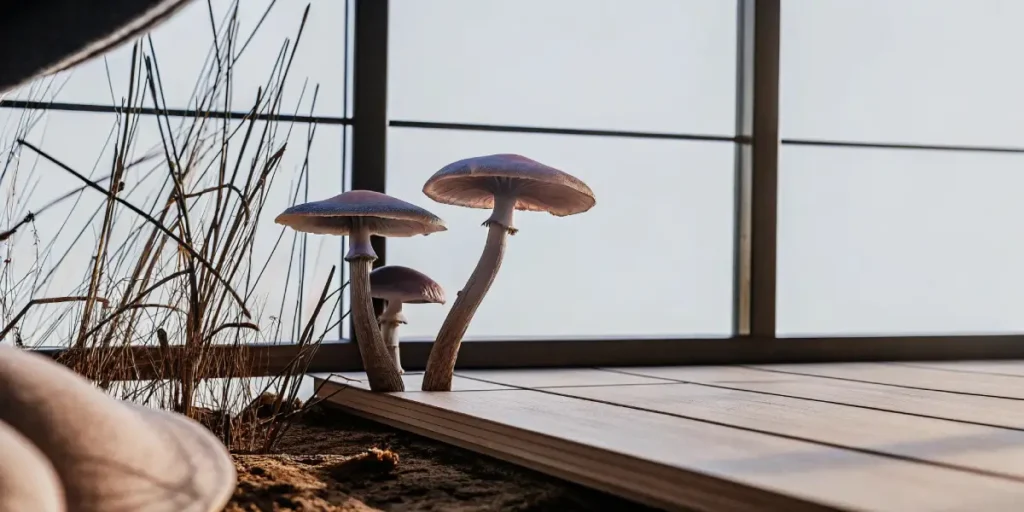
Liberty Caps (psilocybe semilanceata)
Compact, slim, and highly effective Liberty Caps typically feature diminutive, pointed caps. They thrive in damp, grassy habitats in cold to mild climates, such as those in the Pacific Northwest, the British Isles, and the Southern Hemisphere. Considered one of Europe’s earliest identified and studied psychedelic mushrooms, their historical usage dates back several centuries.
Penis Envy (psilocybe cubensis)
Easily identifiable by its phallic form, this well-known variety of psilocybe cubensis (arguably the most sought-after species of psychedelic mushrooms) is believed to possess greater potency compared to standard cubes or cubenses. At present, Penis Envy is experiencing a surge in popularity, with P.E. crosses, particularly Albino Penis Envy or APE, widely available.
Subs (psilocybe subaeruginosa)
Native to Australia and New Zealand, P. Subs are believed to be among the most potent types of psilocybes. Distinguished by their broad, pointed caps, these mushrooms gained popularity among Australian surfers during the ’60s and ’70s and became widespread globally through hippie counterculture movements.
Blue Meanies (panaeolus cyanescens)
A more powerful variety compared to the common cubensis, these mushrooms are dubbed after the foes in the Beatles’ Yellow Submarine. Maintaining their moniker, Pan Cyans frequently exhibit a blue hue when damaged—cyanescens translates to “blue.” They possess a slender stature with typically small caps. Thriving in tropical or subtropical climates, these mushrooms are frequently encountered in Hawaii, purportedly originating from Asia.
Flying Saucers (psilocybe azurescens)
Supposedly deriving its name from Azureus, which means “azure” or “blue” in Latin, Azzies are potent mushrooms commonly discovered in the Pacific Northwest extending into British Columbia. These mushrooms, identified by their pointed tops, cap-like appearance, and diminutive stature, exhibit a vivid blue hue when bruised or aged, as is typical of numerous psychedelic mushrooms. Known among some enthusiasts as part of the Smoke Shrooms experience, Azzies are valued for their intense effects and striking coloration.
We already know what magic mushrooms do to us when we traditionally consume them. We also understand the component that generates the various effects in the users and how it enters the body of the magic mushroom users. We discover what are the chemical processes that occur in the users’ bodies when mushrooms are consumed. On the other hand, we found the risks of consuming mushrooms by smoking them as if they were a marijuana joint or a cigarette. We also give you recommendations so that you do not have a bad trip and also so that you do not have future problems with the consumption of magic mushrooms.
FAQs About Smoke Shrooms
Can you Smoke Shrooms and still experience a psychedelic trip?
While it is technically possible to Smoke Shrooms, doing so is not considered effective for experiencing a psychedelic trip. The heat from smoking can destroy the active compound psilocybin before it converts into psilocin—the substance responsible for hallucinations and altered perceptions. Therefore, traditional methods like oral ingestion or mushroom tea are preferred for a full psychedelic effect.
What are the risks of trying to Smoke Shrooms?
Smoking magic mushrooms may expose users to serious health risks, including respiratory issues due to mold spores, lung irritation, and ineffective psychoactive results. Individuals with allergies or pre-existing lung conditions face even greater danger. Unlike ingesting shrooms, which has a predictable onset, trying to Smoke Shrooms may lead to disappointment or even adverse reactions like anxiety and paranoia.
Why do some people choose to Smoke Shrooms despite the risks?
Some users experiment with smoking mushrooms out of curiosity or the belief that it may offer a quicker onset of effects. Others combine them with cannabis to intensify their high. However, experts strongly caution against this practice due to the reduced potency, potential lung damage, and increased chance of a bad trip. Safer alternatives, like mushroom tea or capsules, are recommended over the decision to Smoke Shrooms.

